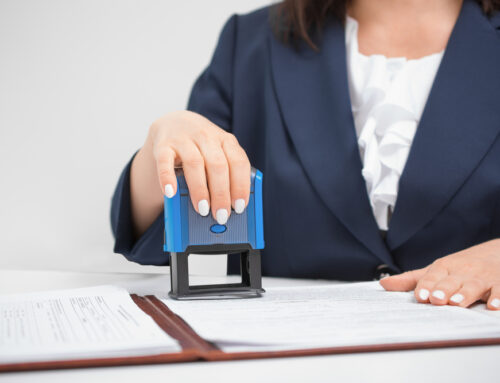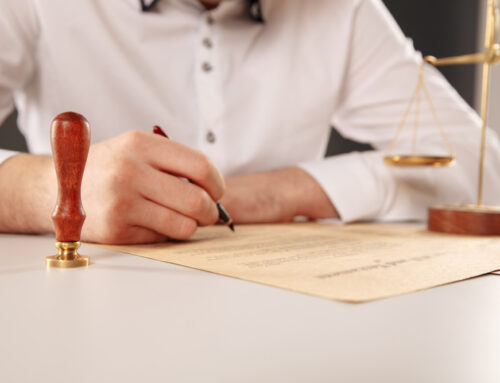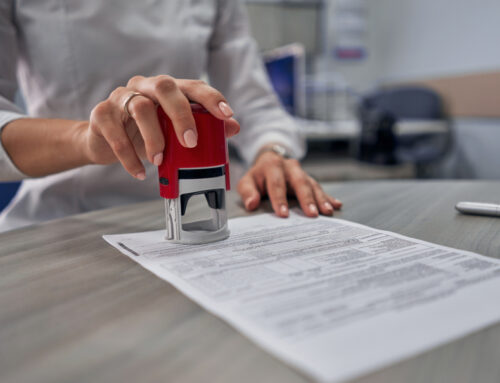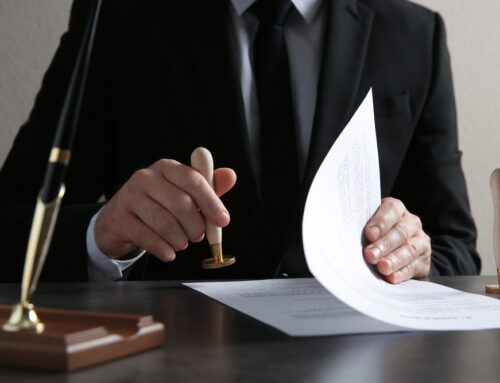Notaries have a steep learning curve, and it’s easy to make mistakes on the job. That’s why many states require notaries to take continuing education classes on how to avoid common errors when completing notarial certificates. If you’re starting as a notary or want to brush up on your skills, this article from Nationwide Notary Bond Agency will help you avoid these common mistakes:
Notary Not Filling Out the Complete Notarial Certificate
The most common mistake when completing a notarization is not filling out the notarial certificate.
Notarization is intended to ensure that the person who has signed the document was, in fact, present and saw what they were signing. A notarial certificate must include all the information required by law and nothing more to be valid. It’s important for a notary to strictly follow the rules set out by state law or risk invalidating their work.
The certificate must be filled out completely to protect yourself from liability as a notary public. It should contain everything from the date and time of your appointment to the name of the person you have notarized to any underlying documents signed by both parties.
Not Following State Rules for Acknowledgements or Jurats
Notaries are legally responsible for following the specific rules of their state. In some cases, this means notarizing documents in the presence of two witnesses, while in others, it may mean that two witnesses are required to sign the document and then have the notary witness both signatures.
If you’re unsure what the rules are in your state, research before authenticating any documents or before you renew as a notary.
Failure to Enter the Correct Venue
Notaries public are often asked to sign documents at a particular venue. If the notary public fails to enter the correct venue on the certificate, it can be a problem for the signer and the notary. The signer may claim they did not know what they were signing, as it was not properly identified as a document from a specific place.
The notary may also face penalties if it is discovered that they did not enter the correct venue on their certificate, which is required by law.
Failure to Read the Certificate Language Carefully
Failure to read the certificate language carefully is a common mistake. The notary must ensure that the certificate is properly completed and signed and that the person signing it is who they claim to be. They also must ensure that any seals or stamps are correct and comply with state law.
If a document is not properly completed, the notary could be liable for its mistakes. This means that you may have legal trouble if you fail to do your job correctly.
When filling out a notary certificate, it is important to read the text carefully. You should make sure that you understand each line of text, and if you do not, then you should ask for clarification from your supervisor or colleague before continuing with the certificate. Suppose there are any mistakes on the certificate. In that case, these mistakes will be transferred to any documents signed using that document and to any other documents signed by the same notary public.
Dating a Notary Certificate Incorrectly
Notaries are responsible for dating their certificates of notarization properly. If a certificate is not dated, it is invalid and cannot be used as legal proof of a document’s validity.
The date must be placed on the document before it can be signed, printed, or stamped as a notary certificate. The date must include the month, day, and year, and it must be written clearly so that it is easy to read.
The most common mistake when dating a certificate is writing an incorrect year on the document. It is important to verify your dates before signing off on them; otherwise, you could find yourself in trouble if you are ever challenged about the legitimacy of your work by another party.
Putting Your Notary Stamp or Seal in the Wrong Place
Notaries are required by law to place their seal or stamp on every document they certify to authenticate it as an original document that has yet to be modified or altered since it was signed. Notary seals and stamps are important for verifying the authenticity of documents. But if you don’t place them correctly, your notarized document could be rejected as invalid or fraudulent.
The correct placement of a seal or stamp ensures that it is legible and visible on the document. The seal or stamp should be placed so that it does not obscure any portion of the document’s text, including any signatures or other information.
Here are some typical mistakes people make when placing their seals or stamps:
“¢ Placing the seal directly over another seal can result in ink smearing and making the document illegible
“¢ Placing the seal or stamp in an area that’s too small for it which makes it difficult to read
“¢ Placing the seal or stamp on an area where someone could accidentally remove it from the document without damaging it
Conclusion
The notary certificate is an important part of the notarization process, which you should take seriously. Notary mistakes can lead to legal problems for your business and you as an individual. The best way to avoid making these common mistakes is to take the time to learn the expectations from you as a notary public and then practice these skills before performing your duties.
Nationwide Notary Bond Agency is a bonded and licensed notary service that can help you get started in the notary business, maintain your notary commission, and further your notary education. If you wish to become a professional notary quickly, Nationwide Notary Bond Agency can help you get there. Contact us today!





